Presentation
Left shoulder pain and asymmetry. ? Sprengle shoulder.
Patient Data

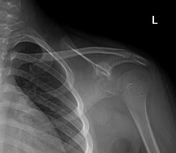

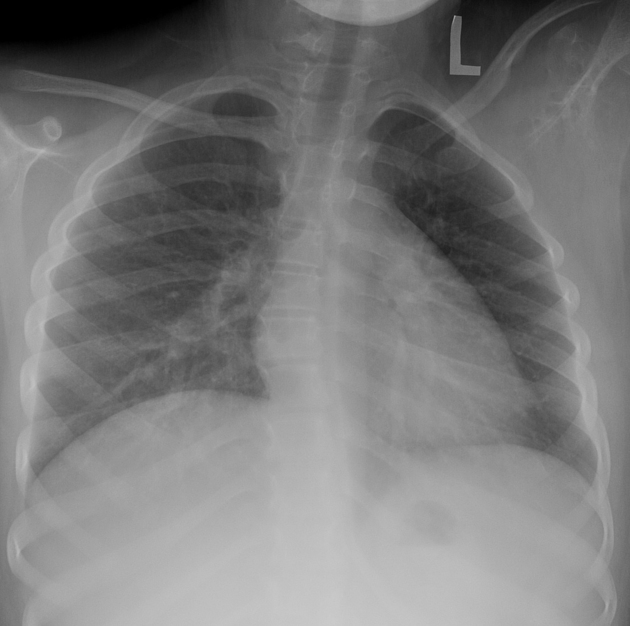
Chest, left shoulder and left humerus x-ray.
Asymmetric shoulders. Left shoulder is elevated and the scapula is displaced from the chest wall, especially on the chest x-ray. Associated soft-tissue mass extends into the axilla.
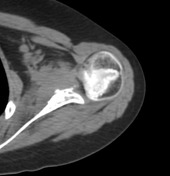

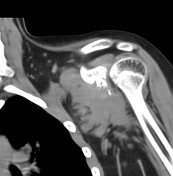

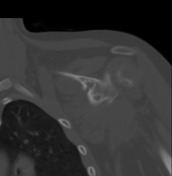

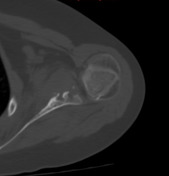


The abnormality of the left shoulder is centered on the subscapularis muscle. There is muscular expansion and adjacent bony destruction. In this age group, a primary muscle sarcoma is considered the most likely differential.
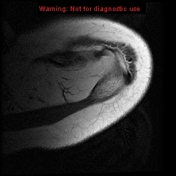

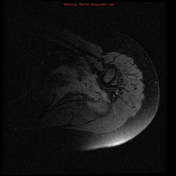

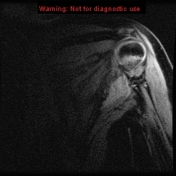

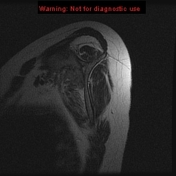

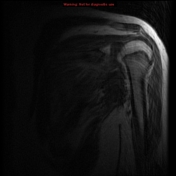

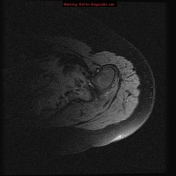

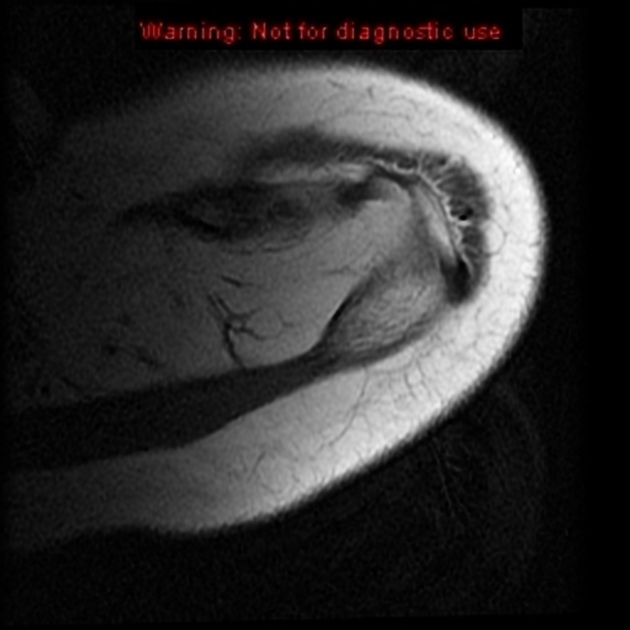
MRI confirms an irregular muscle-based tumor with bony destruction arising from subscapularis and extending into the axilla.
Case Discussion
The differential for this muscle-based tumor has sarcoma at the top (rhabdomyosarcoma is probably the most likely in this age group) with fibroblastic or myofibroblastic tumors in the differential. Biopsy was performed and this was pathologically proven fibromatosis.




 Unable to process the form. Check for errors and try again.
Unable to process the form. Check for errors and try again.